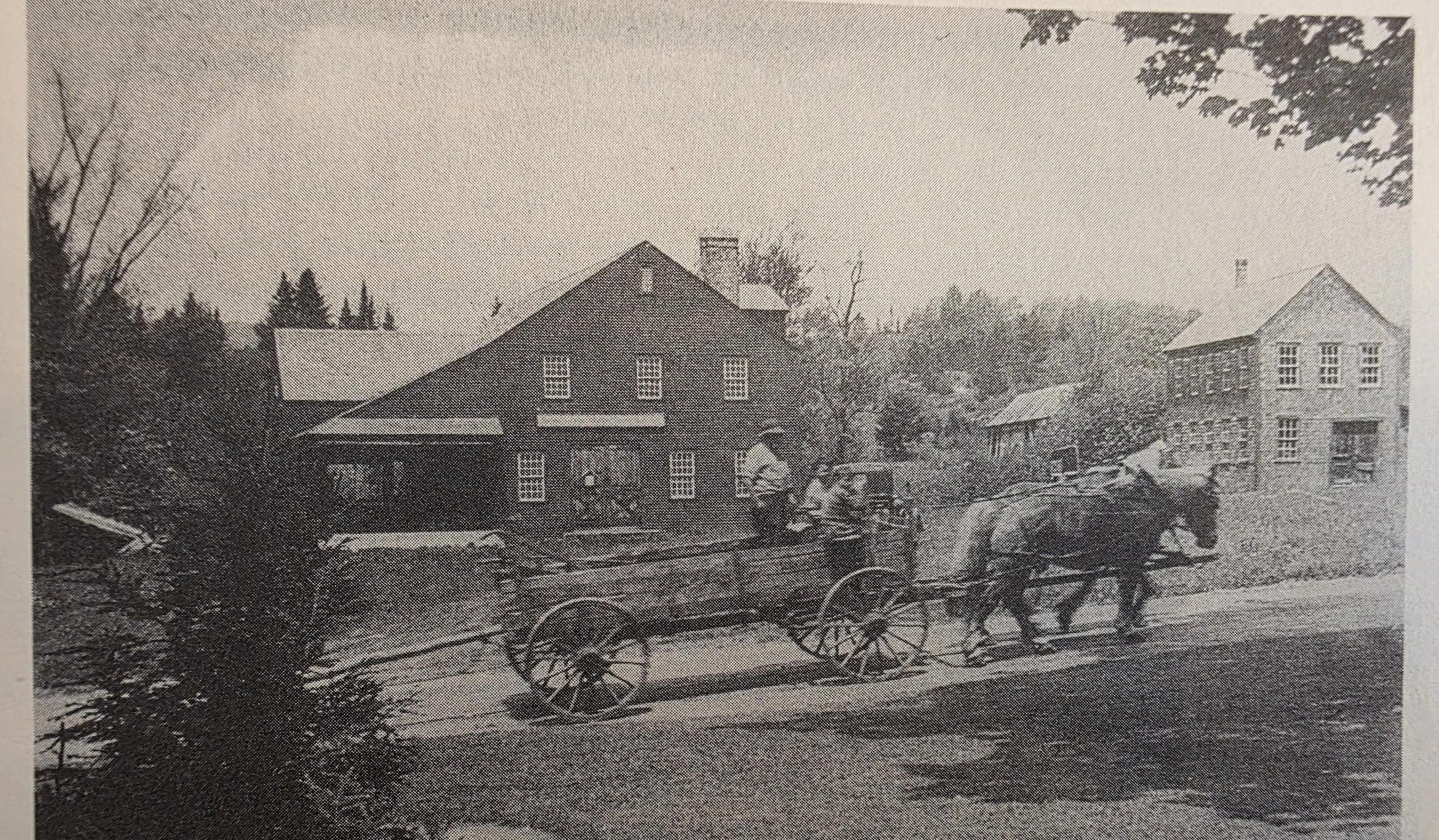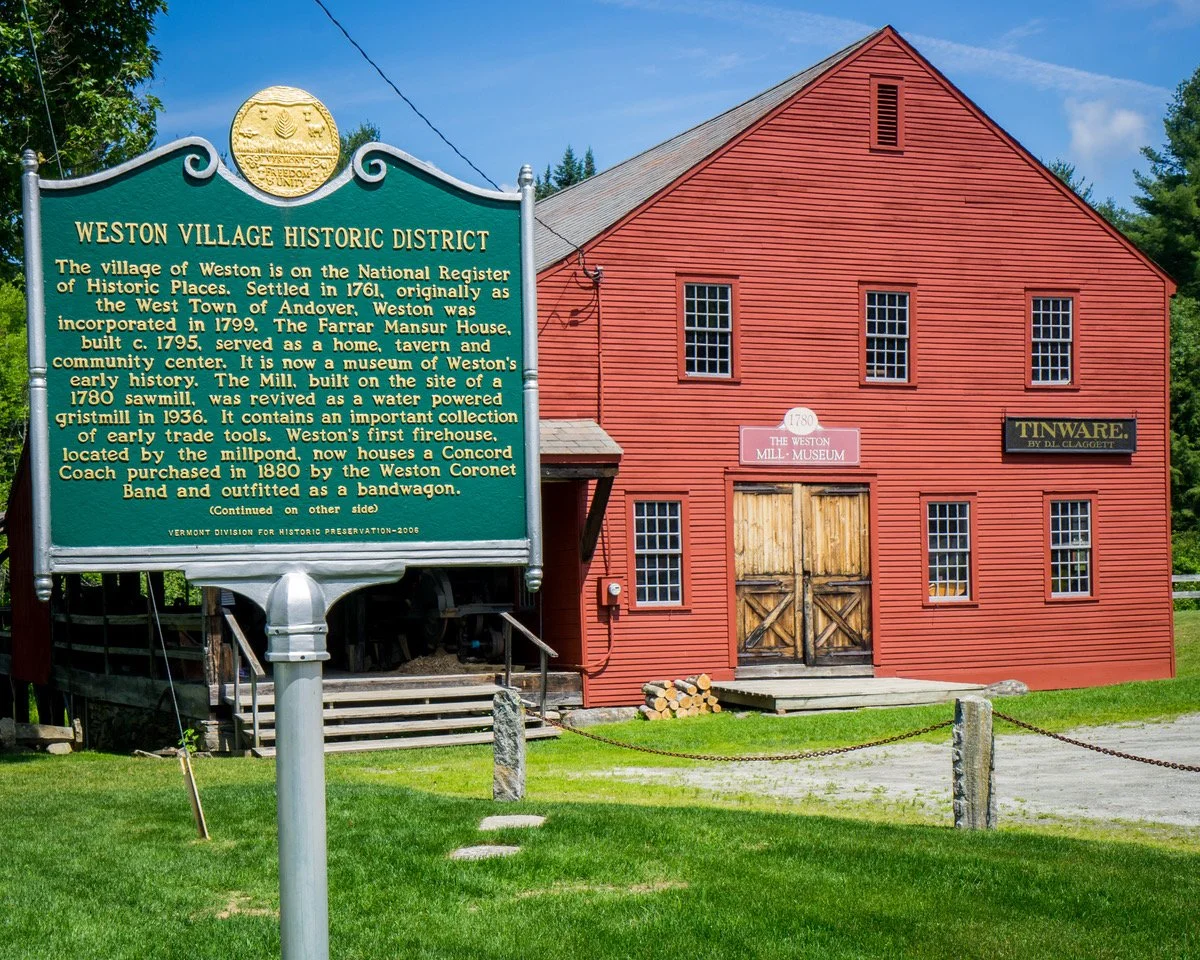The Mill Museum
Since 1780
From A Sawmill to a Grist Mill
The Mill Museum overlooks a picturesque mill pond and waterfall. Built in 1780 by Ezekiel Pease as a sawmill, he operated it until 1785 when he sold it to Oliver Farrah. Subsequently it was owned by Simonds, then Fenn and bought by Franklin Mansur in 1857. It was the site for the manufacture of shingle, wooden bowls and millions of wooden buttons. The mill pond was used as a swimming hole in the early days and an ice skating pond in the winter. later operated as a grist mill, its collection of early trade tools and products includes equipment used in farming, cheese making, coopering, blacksmithing, woodworking, weaving and spinning, and tin smithing.
In 1936, the Vermont Guild of Old Time Crafts & Industries was formed to preserve the best traditions of New England crafts and industries. At that time they owned the grist mill, the dam on the West River and the blacksmith shop next door. By the late 1930s the craft operation was closed but the grain operation contined which began by Gardener Orton, Vrest Orton’s father. The stone-ground grain and various mixes were created by the Orton family and helped them found the Vermont Country Store.
In 1949, there was again interest in reviving the Guild as a craft enterprise. In the 50s and 60s the craft operation flourished alongside the milling of grain. The Grist Mill assumed some of its nineteenth century functions, milling grain for farmers at no cost.
In 1958 the Museum and craft operations were split with two boards overseeing their functions. In 1974 the Guild property including the Mill, Craft Building and dam were deeded to the Weston Community Association. In 1976 the dam was washed out. It served not only to run the Grist Mill but also was a major source of water for the Fire Department. Work began in 1978 to repair it with Weston men and women donating hours to the backbreaking labor of placing rocks between the dam and the decking. cleaning out debris and nailing the decking. When work was completed for $6,182.89.
Since that time the Mill Museum has been maintained with waterwheel replacement and repair of the dam again in 2000. This time the repair cost over $700,000 all paid for by the Weston Community Association.



